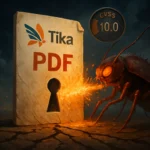Cybersecurity experts at FACCT have uncovered a sophisticated attack vector utilizing email autoreply functions to distribute the Xmrig cryptocurrency miner. This malware, designed to covertly mine Monero, has been targeting major Russian internet companies, retailers, marketplaces, and financial institutions since late May.
The Anatomy of the Attack
FACCT has intercepted over 150 malicious email campaigns exploiting the standard autoreply feature of email clients. This function, typically used for out-of-office responses, is being repurposed by attackers to automatically send pre-crafted messages containing malware to all incoming emails.
The malicious emails are cleverly disguised, containing attachments that appear to be equipment invoices unrelated to the message content. Additionally, these emails include links to cloud-hosted archives containing the Xmrig miner, which is subsequently downloaded onto the victim’s machine.
Compromised Email Accounts: The Root of the Problem
Investigators determined that this attack method requires direct access to email accounts, indicating a large-scale compromise of email credentials. Further research revealed that the affected email addresses had previously appeared in various data breaches, exposing both plaintext passwords and hashed credentials.
Weak Password Practices
The investigation highlighted two critical vulnerabilities in user password practices:
- Use of weak, easily crackable passwords
- Password reuse across multiple services
These practices significantly increase the risk of account compromise, as attackers can easily exploit leaked credentials or use rainbow tables to crack weak password hashes.
Victims and Impact
While the majority of compromised accounts belonged to individuals, the attack also affected business entities, including:
- Arbitration managers
- Small trading companies
- Construction firms
- A furniture factory
- An agricultural enterprise
The Deceptive Nature of the Attack
Dmitry Eremenko, a senior analyst at FACCT’s Cybersecurity Center, emphasizes the unique danger of this attack method: “This malware delivery technique is particularly insidious because the potential victim initiates the communication. They engage in correspondence and anticipate a reply, making them more likely to interact with the malicious content.”
This approach differs significantly from traditional mass email campaigns, where recipients often ignore irrelevant or suspicious messages. In this scenario, the established communication context lowers the victim’s guard, potentially increasing the success rate of the attack.
As this new threat emerges, it’s crucial for individuals and organizations to remain vigilant, implement strong password policies, and regularly update their cybersecurity measures. Continuous education on emerging threats and best practices in digital hygiene can significantly reduce the risk of falling victim to such sophisticated attacks.






